La arepa y los tequeños se han apoderado del mundo, pero yo lo que quiero es comerme una cachapa.
Mi esposo llevaba una eternidad pidiendome que hicieramos cachapas, pero las circunstancias lo habian complicado: primero, no es tan fácil conseguir mazorcas que estén tiernas y dulces y que además estén baratas (recuerden que ahora vivimos en Argentina), por lo que mi mamá sugirió varias veces comprar maiz dulce enlatado y que puede ser buena opcion; lo que nos lleva al segundo impedimento para hacerlas: no teniamos licuadora o algún tipo de molino o procesador.
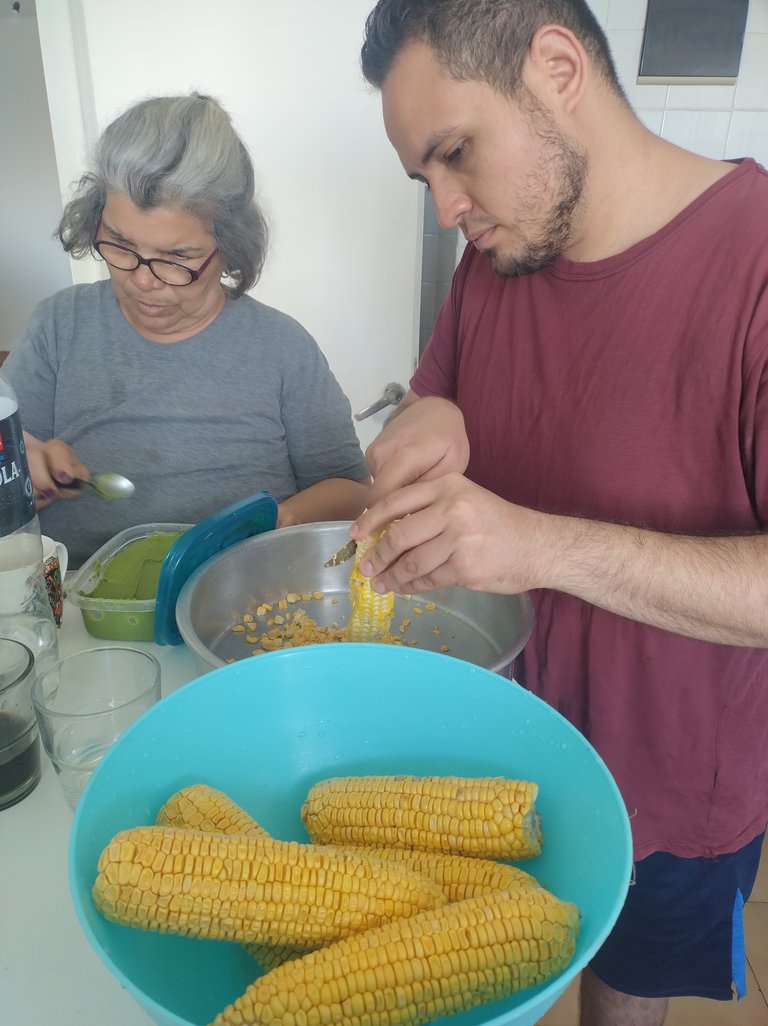
Hace poco que adquirimos una licuadora y con ella se abrió un mundo de nuevas posibilidades, por lo que no dudamos ni un segundo de aprovechar la oferta sabatina de mazorcas y nos pusimos manos a las obras.
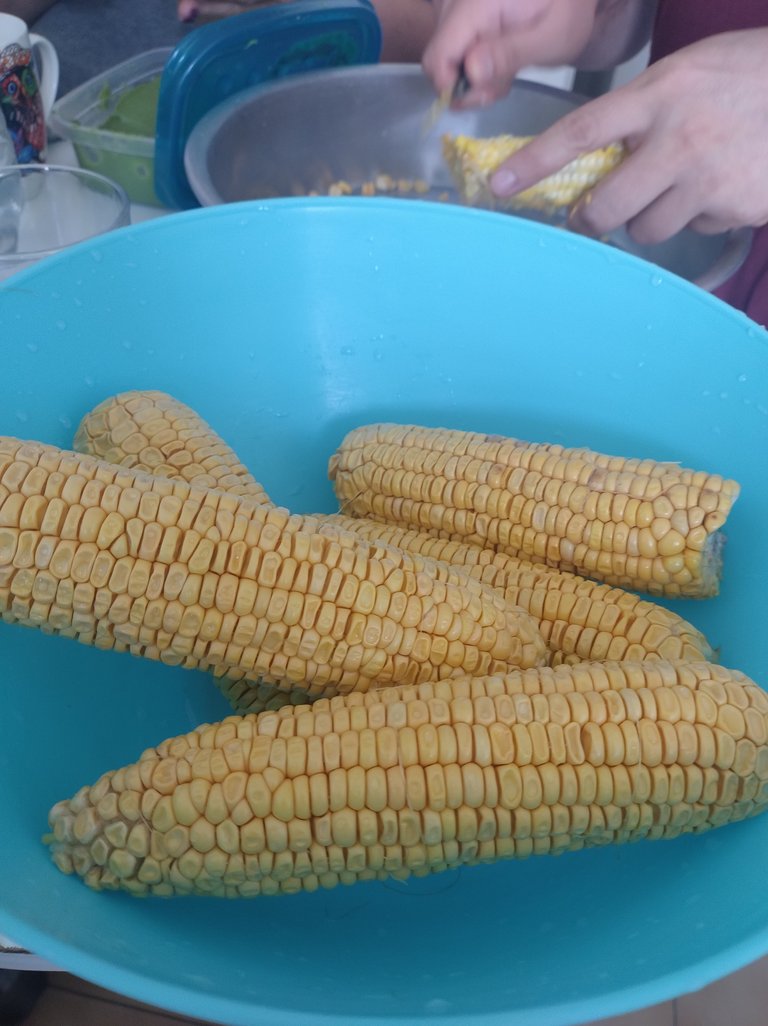
Mientras desgranabamos las mazorcas, mamá nos contaba de su infancia y de como mi abuela le preparaba cachapas y bollitos de maiz tierno a ella y a mis tios cuando eran niños.
La verdad es que no recuerdo cuando fue la ultima vez que hicimos cachapas con este metodo, pero recuerdo que las más ricas las hicimos con un maíz de nuestra propia cosecha. Quizá lo que las hizo tan especiales fue ese sabor único que tiene todo lo que se cosecha en casa.
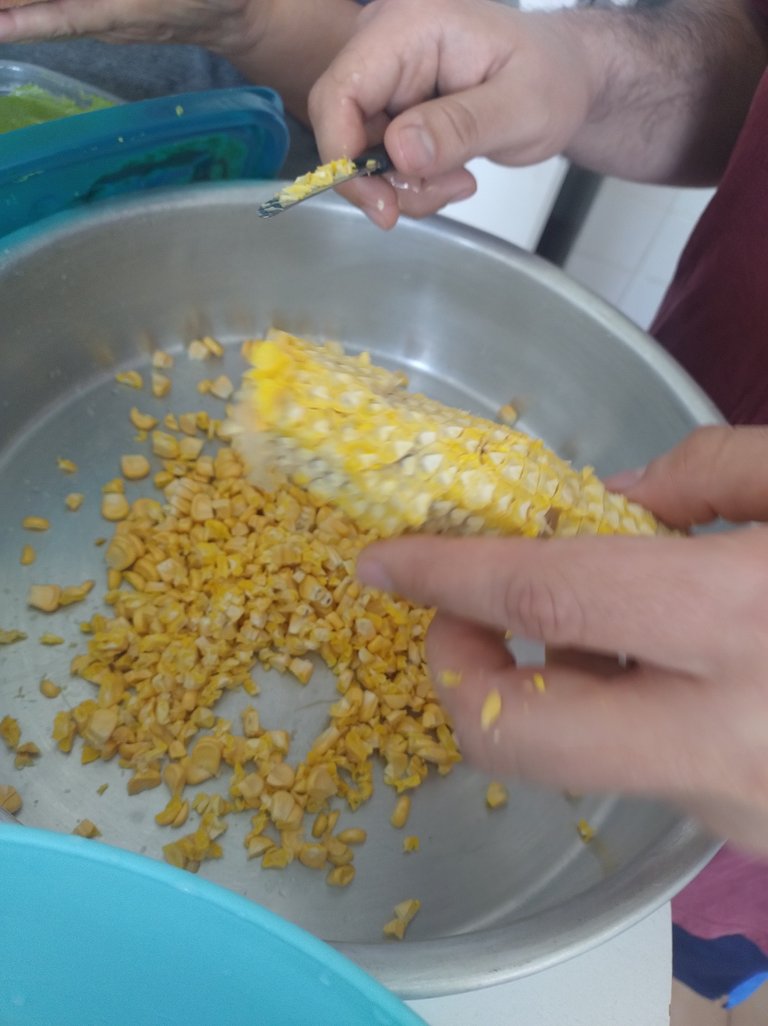
Esta publicación no pretende ser una receta, porque la verdad es que no medí cantidades y no seguí una receta especifica. Me dejé guiar por mi instinto y mis recuerdos.
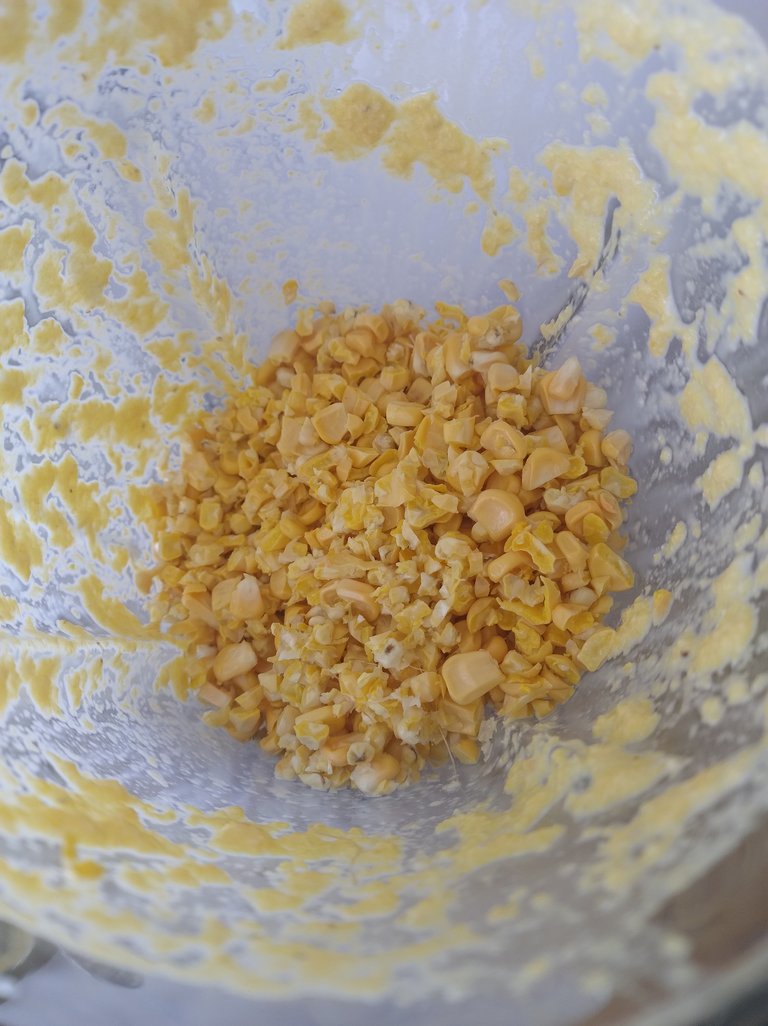
Los granos de maiz fueron a la licuadora con un poco de leche y un par de huevos y la verdad es que no recomiendo llenar la licuadora porque se corre el riesgo de que se queme por el esfuerzo. Mejor hacerlo de a poquito e ir pasando a otro recipiente.
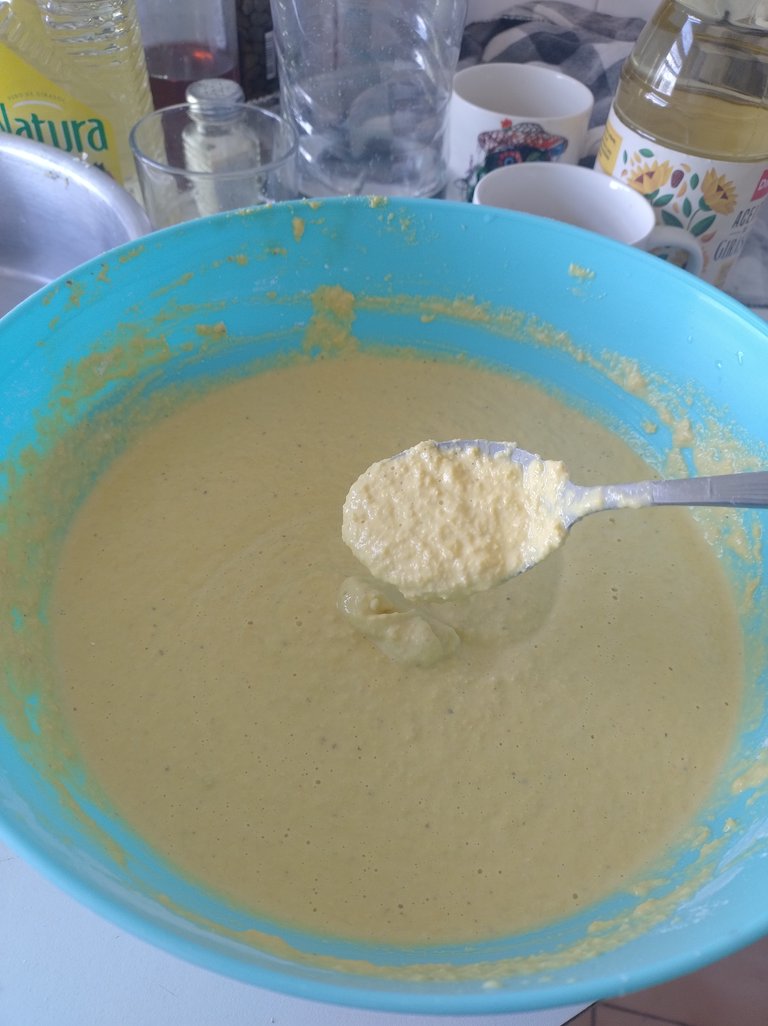
Cuando tienes la mezcla molida, necesitas una textura un poco más espesa que una panqueca y a la mia le faltaba textura así que le puse un poco de harina de maiz y un poquito de harina de trigo (Yo no sé si profané la receta pero me gusta porque quedan más suaves), además se le pone una pizca de sal y una cucharada de azúcar.
No me juzguen si mi receta no es la clasica, pero es que la abuela nunca me dio sus secretos y aunque intenté llamarla, no tenían electricidad en Cumaná y no pude comunicarme.
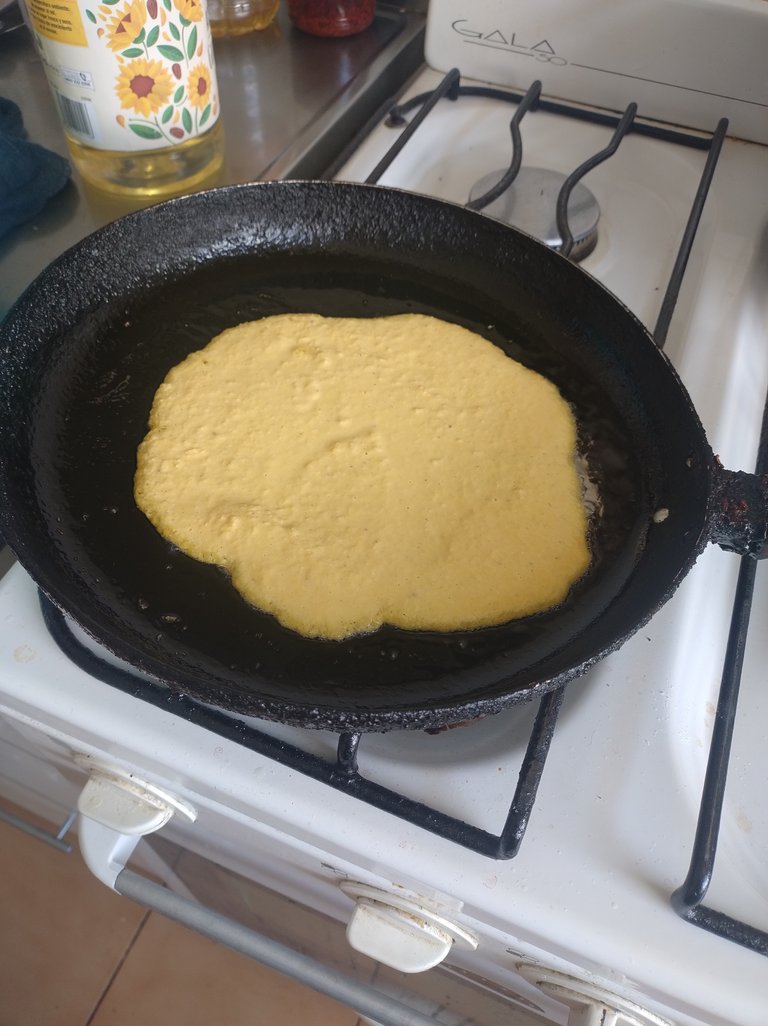
Cuando la mezcla estuvo en el punto justo, la hicimos en un sarten engrasado, tal como si fueran unas paquecas.
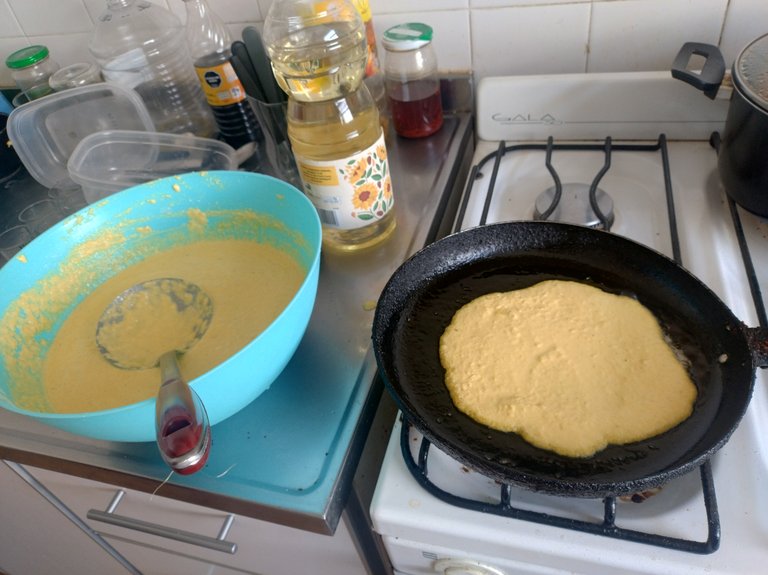
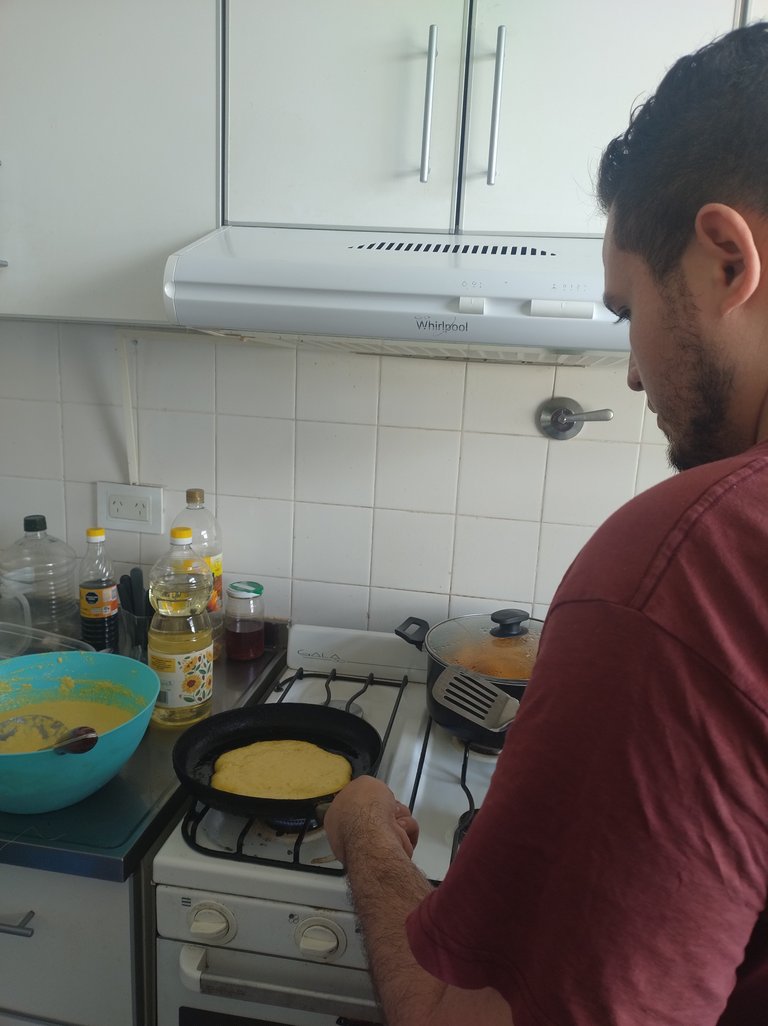
Un ratito por cada lado, sin hacerlas demasiado grandes para que no se rompieran al girarlas.
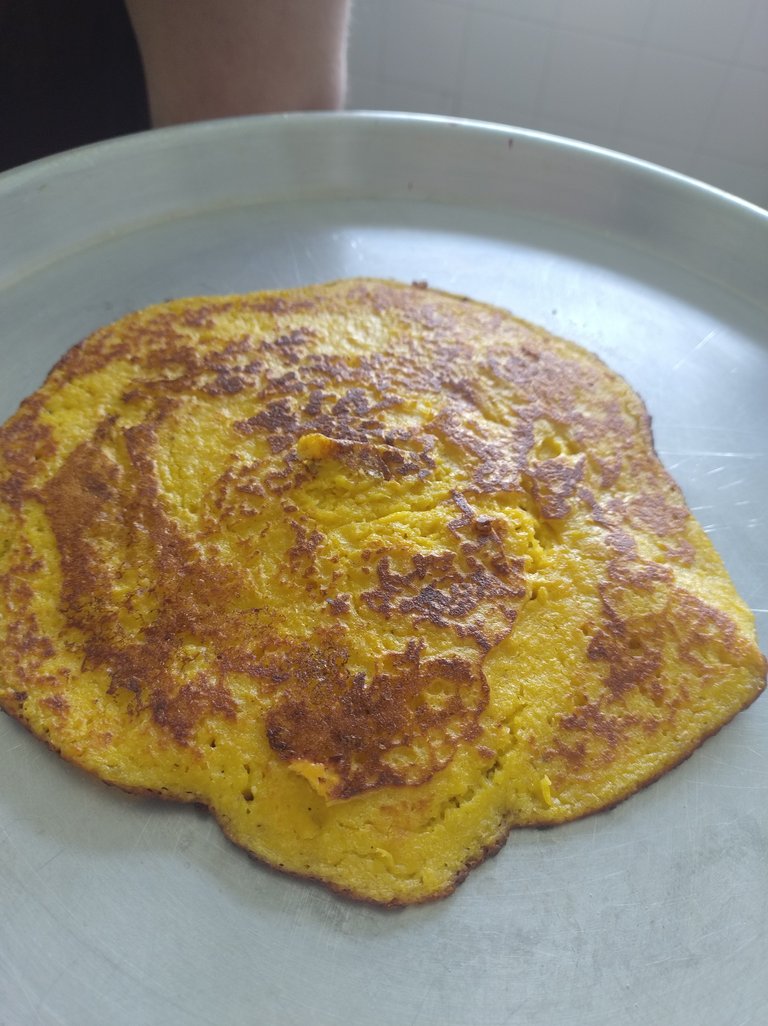
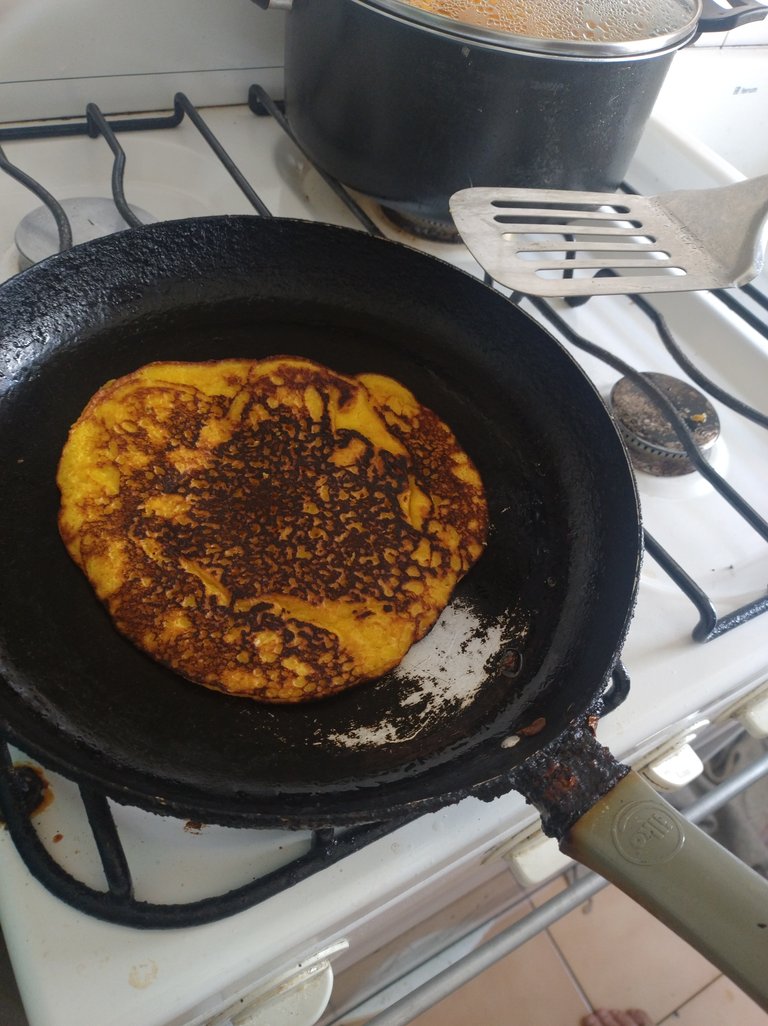
Los olores indicaban que estaban quedando buenas, ademas tenían muy buena pinta; por lo que estabamos muy emocionados.
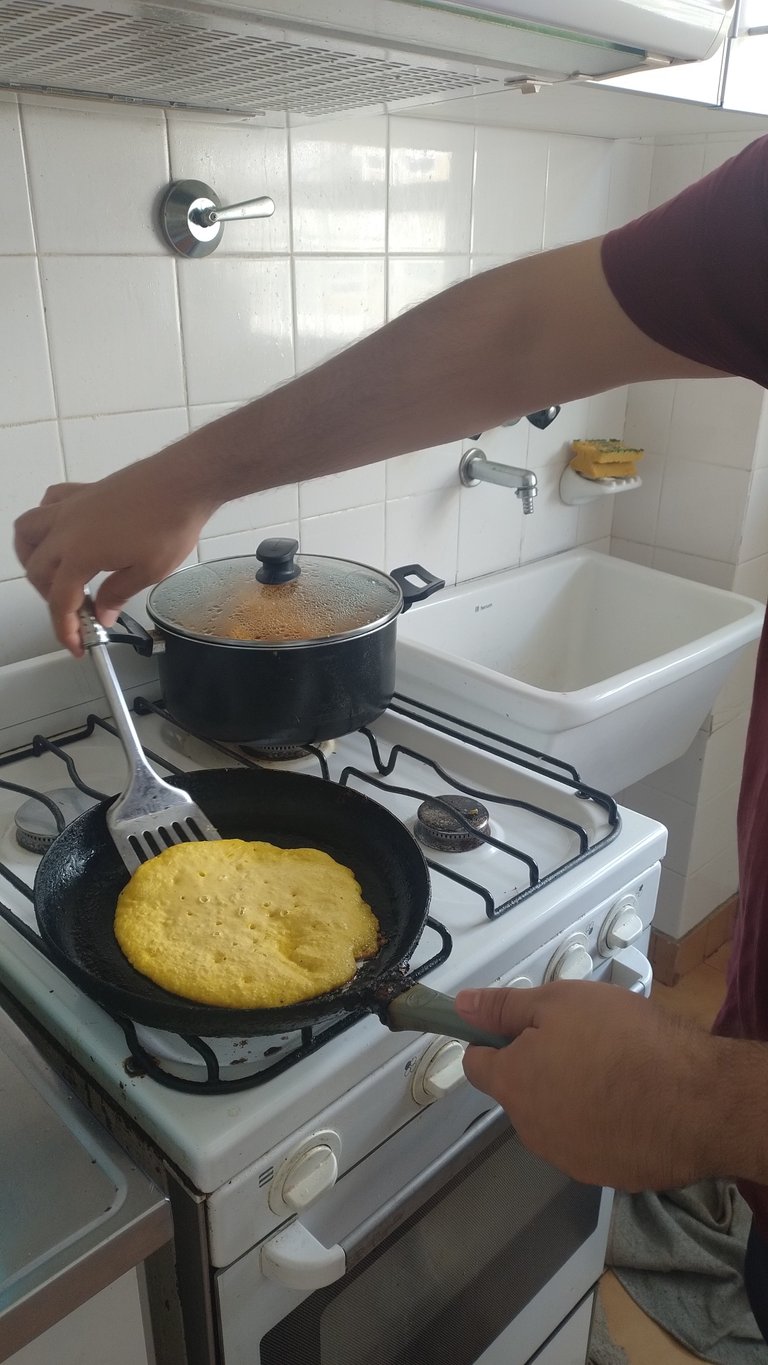
Cocinarlas es un proceso lento y hay que tener paciencia, así que si vas a intentarlo empieza temprano y no improvises de último minuto.
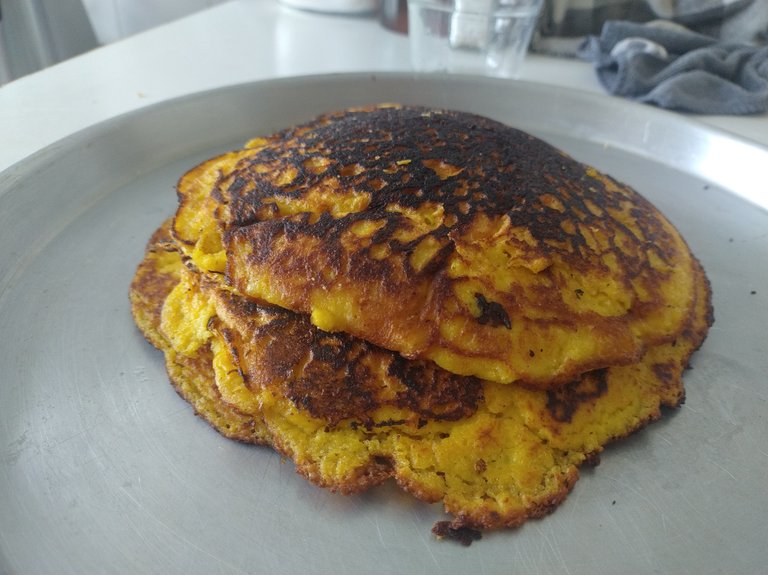
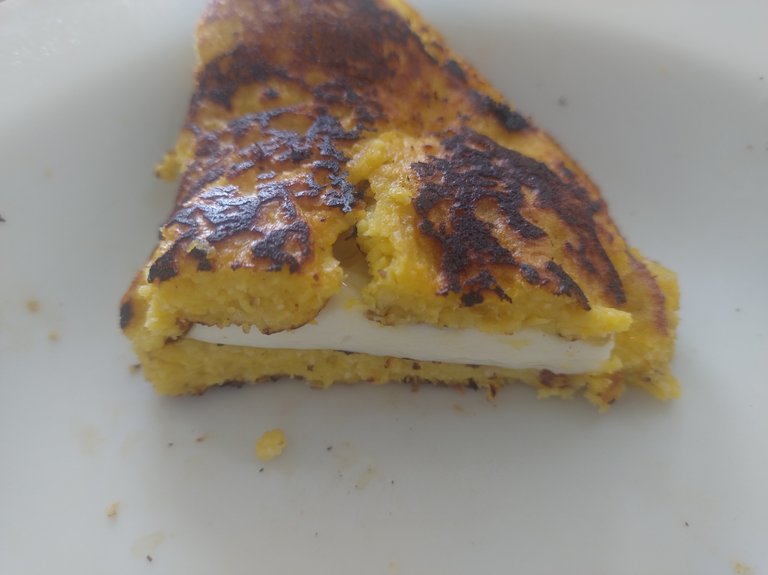
La cachapa tradicional se come con queso de mano, que es un queso fresco y delicioso; pero aquí nos tocó sustituirlo con un queso cremoso que también estaba muy rico.
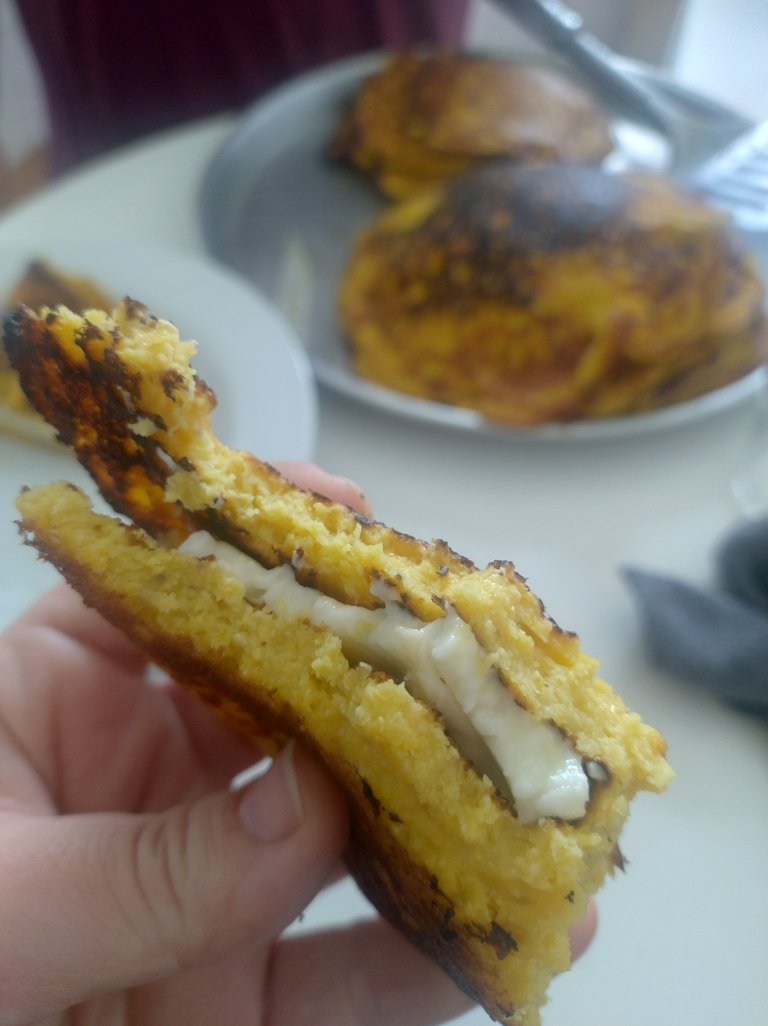
Horas después de empezar todo el proceso, estábamos comiendo unas ricas cachapas, que para lo mucho que tardamos en hacerlas, duraron muy poco.
Mi hermano y mi cuñada llegaron a tiempo para probarlas y nos comentaron que era difícil encontrar unas buenas cachapas en Buenos Aires.
Fue un lindo día lleno de compartir en familia y de buenos recuerdos.
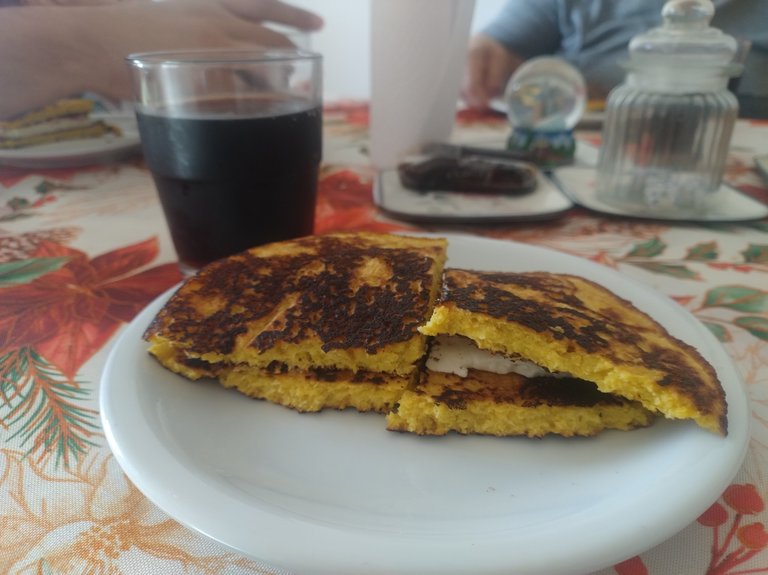
English version by Google translate
Arepas and tequeños have taken over the world, but what I want is to eat cachapa.
My husband had been asking me for ages to make cachapas, but circumstances had made things difficult: first, it is not so easy to get corn cobs that are tender and sweet and that are also cheap (remember that we now live in Argentina), so my mom suggested several times to buy canned sweet corn, which could be a good option; which brings us to the second impediment to making them: we did not have a blender or any kind of grinder or processor.

We recently acquired a blender and with it a world of new possibilities opened up, so we didn't hesitate for a second to take advantage of the Saturday corn cob offer and got to work.

While we were shelling the corn cobs, Mom told us about her childhood and how my grandmother used to prepare cachapas and sweet corn bollitos for her and my uncles when they were children.
The truth is that I don't remember when was the last time we made cachapas with this method, but I do remember that the most delicious ones were made with corn from our own harvest. Perhaps what made them so special was that unique flavor that everything that is harvested at home has.

This post is not intended to be a recipe, because the truth is that I did not measure quantities and I did not follow a specific recipe. I let myself be guided by my instinct and my memories.

The corn kernels went into the blender with a little milk and a couple of eggs and the truth is that I do not recommend filling the blender because you run the risk of burning it due to the effort. It's better to do it little by little and move it to another container.

When you have the ground mixture, you need a texture a little thicker than a pancake and mine lacked texture so I added a little corn flour and a little wheat flour (I don't know if I profaned the recipe but I like it because they are softer), plus a pinch of salt and a spoonful of sugar.
Don't judge me if my recipe is not the classic one, but the thing is that grandma never gave me her secrets and even though I tried to call her, they didn't have electricity in Cumaná and I couldn't get through.

When the mixture was at the right point, we made it in a greased pan, just as if they were packets.


A little while on each side, without making them too big so they don't break when you turn them.


The smells indicated that they were coming out well, and they also looked very good, so we were very excited.

Cooking them is a slow process and you have to be patient, so if you are going to try it, start early and don't improvise at the last minute.


Traditional cachapa is eaten with queso de mano, which is a fresh and delicious cheese; but here we had to replace it with a creamy cheese that was also very tasty.

Hours after starting the whole process, we were eating some delicious cachapas, which, considering how long it took us to make them, lasted very little.
My brother and sister-in-law arrived in time to try them and told us that it was difficult to find good cachapas in Buenos Aires.
It was a nice day full of sharing with family and good memories.


Imágenes de mi autoría tomadas con teléfono Motorola Edge 30 Neo
Images of my authorship taken with Motorola Edge 30 Neo phone
